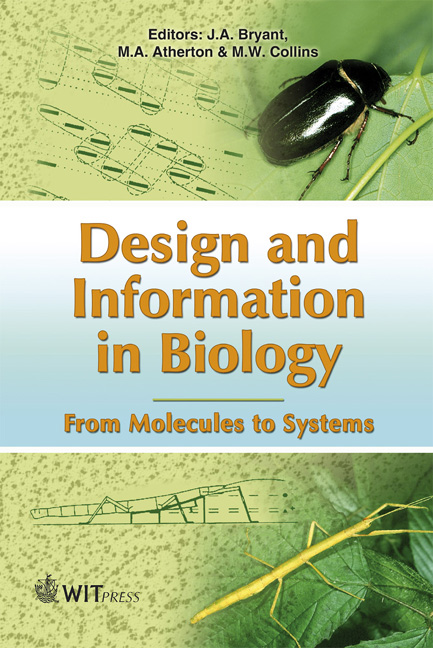Introduction: Part I – Design And Information In Biological Systems
Price
£23.00
Volume
27
Pages
11
Published
2007
Size
896 kb
Paper DOI
10.2495/978-1-85312-853-0/01
Copyright
WIT Press
Author(s)
J. Bryant
Abstract
Chapter 1 Introduction: Part I – Design and information in biological systems J. Bryant School of Biosciences, University of Exeter, Exeter, UK. Abstract The term ‘design’ in biology usually refers to fitness for purpose: is the particular structure or mechanism effective in carrying out its function? This must be seen in the light of evolution by natural selection. Organisms which function better in a given environment than their close relatives and therefore have a greater reproductive success will become more abundant at the expense of less successful individuals. The millions of species of living organisms, from the most simple to the most complex, now present on earth have arisen by this process. Natural selection can only work if a particular advantage exhibited by particular individuals is heritable, i.e. embedded in the ‘genetic machinery’. That genetic machinery is based on DNA, whose structure is elegantly fitted to its two functions: (a) carrying the genetic information that regulates the development, growth and functioning of the organism; (b) passing on that information to subsequent generations. Genetic information is carried in the order of deoxyribonucleotides in aDNAmolecule. The double helical structure of DNA, coupled with the way that the bases within the deoxyribonucleotides pair specifically between the two chains of the double helix, provides a template mechanism for passing on the information. DNA’s role as the regulator of minute-by-minute function is achieved by the copying of specific tracts of DNA (genes) into mRNA and the translation of the code in mRNAto make proteins. In evolution, it is the subtle changes in the order of deoxyribonucleotides (mutations) that generate the heritable variation based on which natural selection works. We are ignorant as to how these mechanisms originated, but it is thought that early in the development of life, the genetic material was RNA, which in addition to carrying genetic information could also mediate a limited range of the functions now performed by proteins. 1 Design, function and elegance When design is spoken of in the day-to-day world we can discern two separate strands of meaning. The first of these is fitness for purpose. Does the object perform effectively the functions that it is meant for?Will a bridge support appropriate loads under all weather conditions?Will a toaster
Keywords





